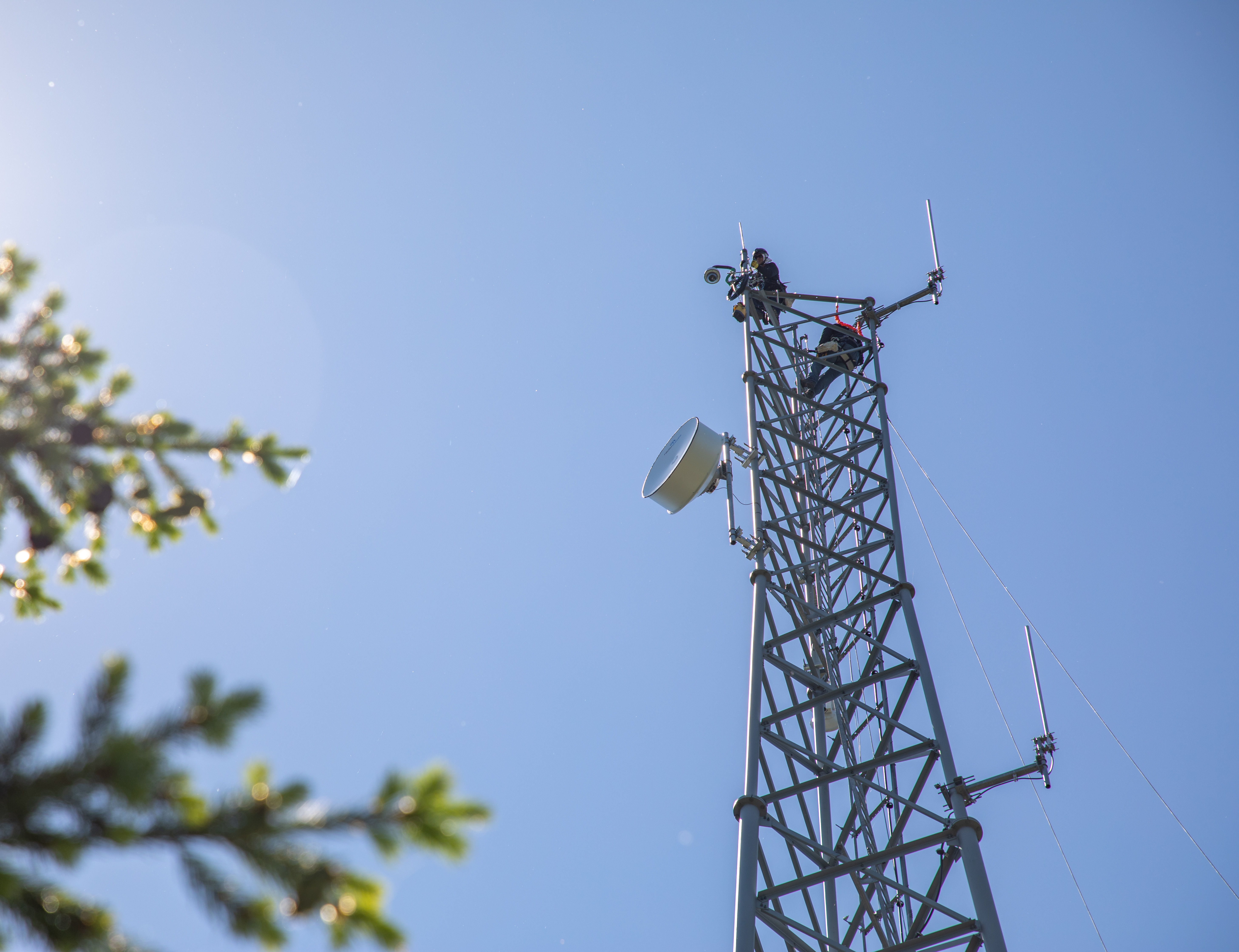Related News
Related News
-
Sustainability Snapshot - Celebrating Energy Efficiency Projects in the Community
Sustainability Snapshops highlight impactful projects completed by EWEB's Customer Solutions department, as a way to celebrate the meaningful work happening behind the scenes.
Find Out More -
EWEB secures $2.5 billion of reliable, affordable, carbon-free energy for customers
The new contract with EWEB’s largest energy supplier, the Bonneville Power Administration, forms the foundation of a diverse energy portfolio.
Find Out More -
EWEB Hometown Heroes compete internationally
Out of 290 teams from 14 different countries, EWEB's Lineman Rodeo team places in the top third of competitors.
Find Out More -
EWEB completes helicopter installation of salmon habitat features
EWEB adds downed trees and 2,000 tons of gravel to the Uupper McKenzie River below Tamolitch Falls to improve spawning habitat.
Find Out More -
Court rules in favor of EWEB in Carmen-Smith litigation
The U.S. District Court in Eugene has granted EWEB's motion to dismiss a lawsuit brought under the Endangered Species Act pertaining to fish passage at EWEB’s Trail Bridge Dam. The favorable ruling clears the way for EWEB to continue advancing towards implementation of permanent fish passage at the dam.
Find Out More -
EWEB proposes modified plan for permanent fish passage at Trail Bridge Dam
After eight months of extensive collaboration and analysis with scientific experts at two federal regulatory agencies, EWEB is proposing an improved plan to build permanent fish passage facilities at Trail Bridge Dam on the McKenzie River.
Find Out More -
Sustainability Snapshot - Ideal Steel July 2025
Our second Sustainability Snapshop highlights a project where EWEB helped a local industrial warehouse upgrade over 1,000 flourescent lights to new efficient LEDs.
Find Out More -
EWEB prepares for wildfire season with risk mitigation measures
EWEB is building a more resilient electric system to weather various types of disasters, from wildfire to winter storms.
Find Out More -
Improving habitat resiliency throughout the Upper McKenzie
Environmental Responsibility is a core guiding value for EWEB decision-making. This summer, EWEB continues its commitment to environmental stewardship with a robust slate of habitat enhancement updates throughout the upper McKenzie River, across the footprint of the Carmen-Smith Hydroelectric Project.
Find Out More -
EWEB weighs multi-billion-dollar decision affecting energy supply
EWEB is weighing energy supply decisions that will cost nearly $2 billion over the next two decades.
Find Out More -
EWEB opens applications for 2025 Electric Mobility Community Grant
The Eugene Water & Electric Board is now accepting applications for the 2025 Electric Mobility Grant, reinforcing EWEB's commitment to sustainability and cleaner transportation.
Find Out More -
Greenpower subscribers vote to award Greenpower Grant to SquareOne Villages
The Greenpower Grant, funded solely by voluntary customer subscriptions, supports local sustainability projects.
Find Out More -
EWEB reaffirms commitment to resilience with Wildfire Mitigation Plan approval
The utility is testing new equipment, leveraging technology, and incorporating third-party expertise to bolster electric system resiliency to a range of threats, including wildfire.
Find Out More -
Vote now for the winner of the 2025 Greenpower Grant
Get ready to cast your vote for the winner of the 2025 Greenpower Grant. EWEB is excited to announce the eligible candidates for this year's grant award! The winner of the Greenpower Grant will be voted on by Greenpower subscribers. Learn more about each origanization and their proposal before casting your vote.
Find Out More -
How EWEB’s Fleet Services reached 200,000 hours without a lost time injury
EWEB’s Fleet Services team reached a major safety milestone: 200,000 work hours without a workplace injury that results in an employee losing at least one full day of work.
Find Out More - Show More
New camera atop EWEB tower will bolster wildfire early detection capabilities
June 28, 2022

A new digital fire lookout tower will soon be able to spot small fires before they threaten communities and infrastructure in the upper McKenzie River Valley, thanks to a new ALERTWildfire camera installed Monday on a communications tower owned and operated by EWEB.
The camera, which is mounted on an EWEB communications tower that provides radio communication for EWEB’s Carmen-Smith hydroelectric project, will provide a live feed viewable by anyone at www.alertwildfire.org. This is the first ALERTWildfire camera in the area impacted by the 2020 Holiday Farm Fire.
ALERTWildfire is a project led by three universities, including the Oregon Hazards Lab at the University of Oregon, to provide cameras in wildlands that can help firefighters discover, monitor and contain wildfires. The first ALERTWildfire camera was installed in 2013 in Nevada, and the project now has more than 1,000 cameras across the American West.
“Early detection, especially in remote areas with steep terrain, is important for both emergency responders and the public, so they have time to make plans to stay out of harm’s way,” said Jeannine Parisi, EWEB’s resiliency manager. “That’s why we’re working with the University of Oregon to provide the kind of long-distance visibility that any community member can access and quickly report if they see a wildfire.”
EWEB is offering space on its tower – which provides radio communications for EWEB’s Carmen-Smith hydroelectric project – as part of the utility’s wildfire mitigation activities. EWEB’s Board of Commissioners reviewed the utility’s Wildfire Mitigation Plan in June and is scheduled to vote on it in July. The plan will then be submitted to the Oregon Public Utilities Commission, as required by law.
Other elements of EWEB’s wildfire mitigation plan include inspecting power poles and pruning vegetation along 250 miles of power lines every year. EWEB is hardening infrastructure by replacing some wood poles with iron ones, changing the fluid in transformers to a less flammable material and consolidating the wires on poles to reduce the risk of sparking. In the coming years, EWEB will continue to enhance designs and construction techniques through a lens of wildfire mitigation to limit the risk of a fire igniting or damaging systems.
“I'm really pleased to see the quick action installing more cameras using modern technology that will allow more eyes watching, and real-time visual access for firefighters to see what's happening and plan their response. This is one of a number of new cameras that will be added, and EWEB got on board right away. Oregonians will immediately be able to see the benefit of the new cameras,” said Rep. Nancy Nathanson (District 13).
On Monday, June 27, the wildfire camera was installed on top of the 190-foot-tall communications tower approximately 65 miles east of Eugene. Information technology company Elevate Technology Group installed the camera – its fourth wildfire camera in Oregon – for free. Elevate is also providing a backup internet connection on the tower. To install the camera, an Elevate crew member ascended the 190-foot tower to bolt on the camera, spending 4 to 6 hours off the ground. The Elevate team rigged ropes to pull up the basketball-sized, 75-pound camera and its mounting equipment.
The camera’s lens has a 360-degree view of the surrounding mountains and can see 40 miles into the distance during the day and about 120 miles at night, though the rugged terrain around it will most likely block some of that view. The camera’s housing contains a heater and fan to remove fog and ice. The camera will also have near-infrared viewing abilities so it can detect the light resulting from a wildfire during dark hours.
The live camera feed will begin a few days after installation.
With high-quality information about the size and severity of wildfires, emergency responders can better marshal resources to contain wildfires or evacuate at-risk areas.
“There used to be hundreds of fire lookout towers staffed by people across the American West, watching for fires. We don’t have that anymore, but what we do have now is a growing network of digital lookouts in these wildfire cameras,” said Douglas Toomey, a professor of earth sciences at the UO, and the director of the Oregon Hazards Lab, which is partnering on the project. “Preventing the most destructive wildfires requires spotting them before they morph into bigger blazes – even if those fires start in a remote location.”

